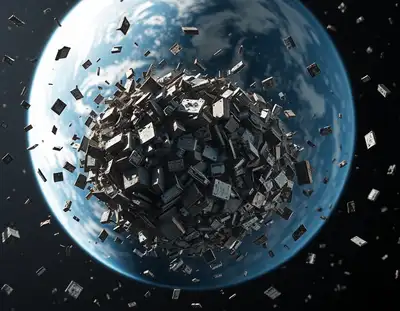Globally, 2.9k objects were placed in orbit in 2024; 3.6k added to debris – The Times of India

BENGALURU: Globally, 2024 continued to see a significant number of space launches, with 261 attempts and 254 successes, resulting in 2,578 operational satellites and a total of 2,963 objects placed in orbit, although the total objects placed in orbit is slightly lower than the 3,135 objects from 212 launches in 2023.Revealing these details, the Indian Space Situational Assessment Report (ISSAR) for 2024, also said that renewed interest in lunar missions was evident, with five lunar missions launched during the year. However, 2024 also witnessed three significant on-orbit fragmentation events, including the breakup of a Chinese Long March rocket stage (CZ-6A), which alone added approximately 650 catalogued objects to space debris. These events contributed to a net addition of 702 fragmented objects by year’s end. In total, 3,665 objects from launches and fragmentation events were added to the space object population. Simultaneously, a record 2,095 catalogued objects re-entered Earth’s atmosphere, including 335 Starlink satellites deliberately deorbited.
“This increase in re-entries was influenced by intense solar activity as the peak of Solar Cycle 25 approached, featuring 18 strong (G3), 20 severe (G4), and 2 extreme (G5) geomagnetic storms that accelerated orbital decay,” the report noted.Indian endeavorsBy Dec 31, 2024, India had a total of 136 spacecraft, encompassing government, private, and academic initiatives. The government operated 22 satellites in Low Earth Orbit (LEO) and 31 in Geosynchronous Earth Orbit (GEO). Additionally, two deep space missions—Chandrayaan-2 Orbiter and Aditya-L1 at the Sun-Earth Lagrange point—remained active. The propulsion module of Chandrayaan-3 continued operations in a high Earth orbit after its relocation from lunar orbit in Nov 2023. India conducted five successful launches from Sriharikota: the PSLV-C58 carrying XPoSat, PSLV-C59 carrying Proba-3, PSLV-C60 that launched the SpaDex satellites, GSLV-F14 carrying the Insat-3ds, and the SSLV-D3/EOS-08. Additionally, GSAT-20 and TSAT-1A were launched aboard SpaceX’s Falcon-9 from Cape Canaveral. Collectively, these missions added eight Indian satellites, one foreign satellite, and six rocket bodies to orbit.Re-entry & decommissioningThirty-four Indian rocket bodies re-entered Earth’s atmosphere by Dec 2024—five of them in 2024. “All LVM3 stages have decayed except the one from LVM3 M2 (OneWeb India-1). Only GSLV-F12 and F14 stages remain in orbit,” the report reads.A total of 31 Indian satellites have re-entered so far, with 9 in 2024. Cartosat-2 was the first Isro LEO satellite de-orbited at end-of-life to cut its orbital life from 30 to under four years. Scatsat-1 was deorbited in 12 manoeuvres and passivated on Sept 26, 2024, eight years post-launch. The INS-2B and EOS-7 were also decommissioned before re-entry.Collision avoidance & risk mitigationIsro analysed over 53,000 close approach alerts in 2024. Ten Collision Avoidance Manoeuvres (CAMs) were executed—six in LEO and four in GEO. An additional CAM was performed for Chandrayaan-2, with its orbit manoeuvre advanced to avoid Nasa’s LRO.CAMs were fewer than in 2023, thanks to refined analysis and the integration of avoidance within regular orbit manoeuvres. “In 2024, Isro carried out 681 orbit manoeuvres in LEO, 504 in GEO, 21 in deep space (Chandrayaan-2 and Aditya-L1). Eighty-nine LEO and two GEO manoeuvre plans were revised to avoid post-manoeuvre conjunctions,” the report noted.Also, Launch Vehicle Clearance (COLA) assessments were conducted for all 2024 launches. Only PSLV-C60 was delayed (by 2 mins 15 secs) due to collision risk. All other missions proceeded on schedule.Isro also deorbited its POEM-3 and POEM-4 platforms that carried 9 and 24 payloads, respectively. “Both upper stages were de-orbited to ~350 km and passivated, limiting their life to around 3 months,” the report noted.
















